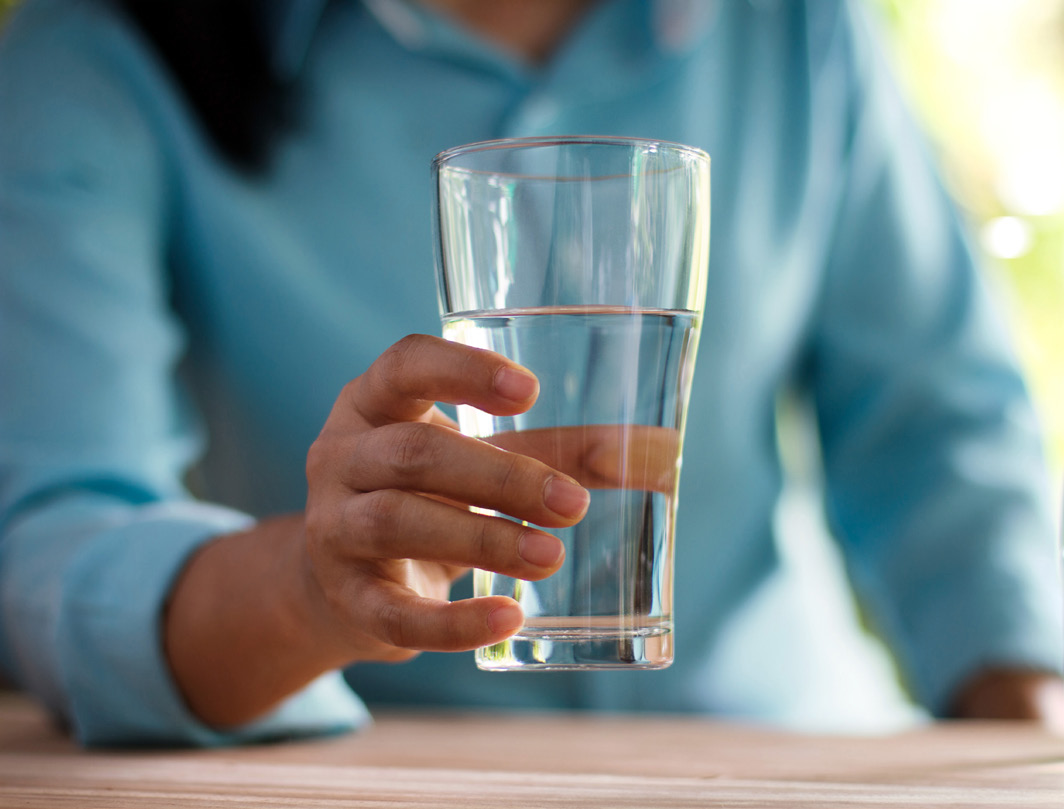Emergency Water Supply
SAL-00006 View this publication in PDF form to print or download.
by Art Nash
Clean water is essential and that is why emergency planners say you should have 7 gallons of water per person (and pet) in case you need to evacuate. The water should be stored in clear or blue-tinted containers that will allow UV rays to help disinfect it naturally. These containers should be moveable in case you have to take them with you over different terrain during an emergency. Round 3-to 6-gallon jugs tend to work best, and some styles have divots in the bottoms so you can stack them. When calculating how much you want to fill jugs for portability, remember that water weighs a bit over 8 pounds per gallon.
Obtain clean water from private wells. Be sure to store bottles and jugs in locations away from household cleaners or volatile organic compounds. It is always best to rotate out the stored water every six months. Mark each container’s lid with a red crayon or grease pencil to indicate the date you filled it. You may also want to buy an extra pack of lids to have on hand in case they crack while moving the jugs.
If you haven’t stored water and your regular source is not potable, then perhaps your best source may be tapping the 60 gallons stored in your hot water tank. Hot water heaters that that are not “on demand” and have typical cylindrical tanks probably have this amount in storage. If you have advance warning before the disaster hits, turn off the water supply to the house to prevent contamination from the supply source. You can use ice or any other frozen water in the refrigerator by thawing it. Even water in the toilet tank (not in the toilet bowl) may be used if it doesn’t have a hanging deodorizer or other chemicals added to disinfect the tank water.
If you happen to have gutters on your home, you can redirect and use rainwater or
snowmelt. Ponds can be used, but remember that they may be contaminated if the water
is brackish, smells or if there is a sheen of material floating on it. If you rely
on city or municipal water, you may be asked by the water utility to boil it. Heat
the water to a full, rolling boil for at least one minute. Check with the utility
or the Alaska Department of Environmental Conservation for bulletin updates.
There are other ways to disinfect your water from microorganisms, which include bacteria, viruses and protozoa (such as Giardia lamblia and Cryptosporidium). Cryprosporidium is one of the most common waterborne diseases in the United States. Chryptosporidium is tolerant of chlorination. The Centers for Disease Control and Prevention recommends boiling water for at least a minute or for the removal of bacteria, viruses and parasites (but NOT chemical contamination).
You can add a drop of regular, unscented, dye-free bleach to a quart of water, but allow it to take effect for a half hour before using the water. This comes out to a half teaspoon per 10 gallons if the water is clear. If the water is cloudy, double the amount of added bleach. You can use a filter in a straw, cup or pump unit. You just want to make sure it can filter 0.5 microns or larger (particle size). If the water is disinfected and tastes flat, you can freshen the water by pouring it back and forth several times between two clean jars or food-grade containers.
| Volume of Water | Amount of 6% Bleach to Add | Amount of 8.25% Bleach to Add |
|---|---|---|
| 1 quart/liter | 2 drops | 2 drops |
| 1 gallon | 8 drops | 6 drops |
| 2 gallons | 16 drops (1/4 tsp) | 12 drops (1/8 teaspoon) |
| 4 gallons | 1/3 teaspoon | 1/4 teaspoon |
| 8 gallons | 2/3 teaspoon | 1/2 teaspoon |
Source: Environmental Protection Agency
After flooding, wells sometimes need to be disinfected. If you are in doubt, disinfect. Remove the sealed plates from the top of the well casing. Then pour chlorine bleach down the well casing. Follow this up with running or pouring available water down the casing until you smell the chlorine scent of the bleach. Then reapply the well plates. Inside the house, run the pump and turn on the faucets until you smell chlorine, then close them. Let the chlorine solution stay in the pipes for at least two hours. Open faucets and run the water until the chlorine odor is gone. If you have an in-line water filter, replace the cartridge after the disinfection is complete. If you have a water softener, bypass that before disinfecting.
Another way to ensure a safe water supply during an emergency is to make sure that you have a portable water filter. Most may have a granulated charcoal filter and can be purchased at camping and hunting stores. They can clean water to human consumption standards easily from almost any source. Finally, iodine tablets may offer assistance if you use them as the instructions detail.
Finally, after an earthquake or flood, it is also a good idea to have your water tested by a certified lab to make sure it is free of contaminants. You want to be aware of any contamination from microorganisms, heavy metals, chemicals, petroleum products, etc. Ultimately, you need to know which contaminants are in your water to determine the proper method to decontaminate your well or whether to decommission it. Remember that one of the most important elements in an emergency or disaster, especially in case of a prolonged electrical outage, is water for keeping hydrated during stressful times, for disinfecting and for preparing food. Take care of your water and it will take care of your health!
Art Nash, Extension Energy Specialist
New February 2021
